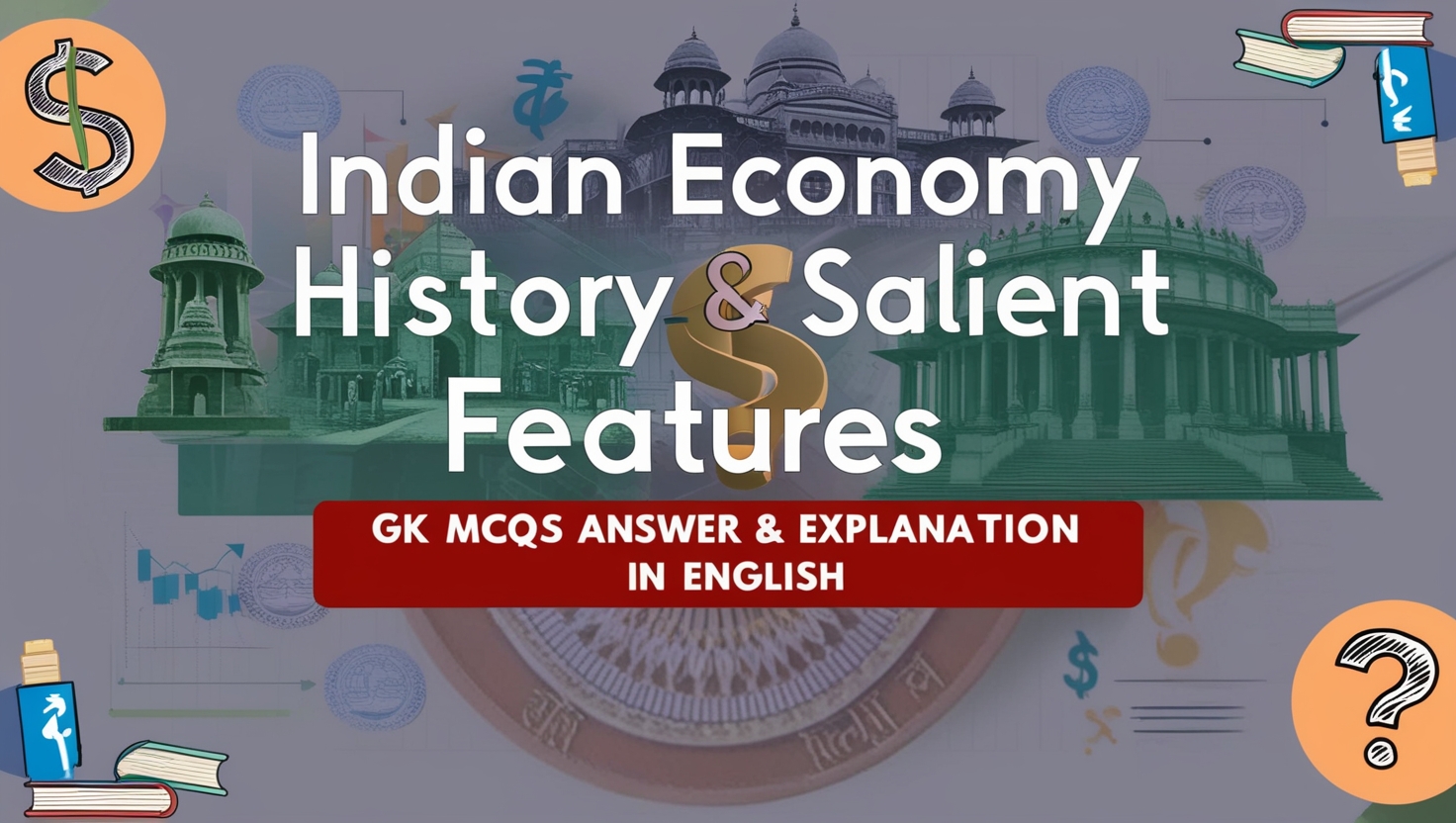
The Indian economy, with its rich history and unique features, has evolved through centuries, reflecting various phases of growth and transformation. This article, titled Indian Economy History & Salient Features GK MCQs With Answer & Explanation in English, presents a series of multiple-choice questions aimed at testing and enhancing your understanding of India’s economic journey.
Whether you’re a student, competitive exam aspirant, or economics enthusiast, these MCQs, complete with detailed answers and explanations, will provide valuable insights into the development and key characteristics of the Indian economy. Dive in and expand your knowledge!
1. Which type of Economy is the Indian Economy?
- Socialist
- Capitalist
- Mixed
- Market
Show Answer
Answer: Mixed
The Indian economy is classified as a mixed economy. In a mixed economy, both the public sector (state) and the private sector (market) play significant roles in economic management. This approach combines government regulation and market-driven activities, allowing both sectors to coexist and contribute to the nation’s economic development.
2. Who established the Central India Spinning, Weaving, and Manufacturing Company in Bombay?
- Ratan Tata
- Jamsetji Tata
- Birla
- Baldev Das Birla
Show Answer
Answer: Jamsetji Tata
Jamsetji Tata, a prominent industrialist, established the Central India Spinning, Weaving, and Manufacturing Company in Bombay in 1877. This venture marked one of the early industrial efforts in India, contributing to the growth of the textile and manufacturing sectors.
3. In which year was the first passenger train introduced in India?
- 1857
- 1853
- 1866
- 1847
Show Answer
Answer: 1853
The history of India’s railway system dates back to April 16, 1853, when the first passenger train ran between Bombay (Bori Bunder) and Thane. This marked a significant milestone in India’s transportation infrastructure.
4. When was TISCO established in Jamshedpur?
- 1906
- 1907
- 1908
- 1909
Show Answer
Answer: 1907
TISCO, established in Jamshedpur, Bihar, in 1907, played a pivotal role in the development of the Indian steel industry. It was one of the earliest steel manufacturing companies in the country, contributing to industrialization.
5. In which year was the Planning Commission set up in India?
- 1950
- 1951
- 1949
- 1952
Show Answer
Answer: 1950
India set up the Planning Commission in 1950 to oversee various aspects of planning, including resource allocation, implementation, and assessment of five-year plans. The Planning Commission was a crucial institution for economic planning in India until it was replaced by NITI Aayog in 2015.
6. Where was the first train called Red Hill Railway launched in 1837 in India?
- Bombay
- Kolkata
- Madras
- Hyderabad
Show Answer
Answer: Madras
The first train in Madras, known as the Red Hill Railway, ran from Red to Chintadripet bridge in 1837. It marked one of the early stages of railway development in India.
7. Who is known as the father of the White Revolution in India?
- M. S. Swaminathan
- Verghese Kurien
- R. S. Sodhi
- Sam Pitroda
Show Answer
Answer: Verghese Kurien
Verghese Kurien is famously known as the ‘Father of the White Revolution’ in India. His contributions to the dairy sector, particularly through the establishment of Amul and the cooperative milk movement, transformed India into one of the world’s largest milk producers.
8. In which year were Rs. 10,000 notes demonetized in India?
- 1978
- 2016
- 1975
- 2015
Show Answer
Answer: 1978
In 1978, Prime Minister Morarji Desai initiated a crackdown on illicit wealth by withdrawing the legal-tender status of ₹10,000 banknotes. This step was taken to curb black money and tax evasion.
9. In which year was Maruti Udyog Limited started?
- 1982
- 1987
- 1985
- 1981
Show Answer
Answer: 1981
Maruti Udyog Limited, later known as Maruti Suzuki India Limited, commenced operations in 1981. It played a significant role in revolutionizing the Indian automobile industry. The first Maruti car was manufactured in Gurgaon.
10. When did the first stock market scam happen in India?
- 1991
- 1994
- 1992
- 1993
Show Answer
Answer: 1992
The first stock market scam in India occurred in April 1992 and involved stockbroker Harshad Mehta. The scam was pegged at ₹4,025 crores and exposed irregularities in the stock market.







